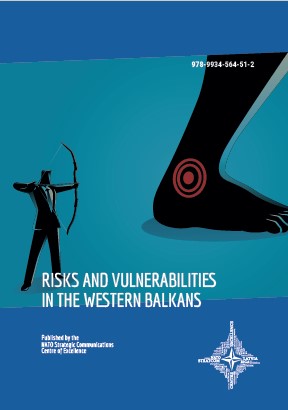RISKS AND VULNERABILITIES IN THE WESTERN BALKANS
RISKS AND VULNERABILITIES IN THE WESTERN BALKANS
Author(s): Rufin Zamfir
Contributor(s): Anna Reynolds (Editor)
Subject(s): Politics / Political Sciences, Politics, Political Theory, Political Sciences, Economic policy, Government/Political systems, International relations/trade, Security and defense, Politics and society, Comparative politics, Inter-Ethnic Relations, EU-Approach / EU-Accession / EU-Development
Published by: NATO Strategic Communications Centre of Excellence
Keywords: Western Balkans; Euro-Atlantic affiliations; Albania; BiH; Kosovo; Montenegro; North Macedonia; Serbia; Ethnic tension; Yugoslav wars; NATO;
Summary/Abstract: The Western Balkans (WB) have come into the international spotlight as an arena for big power competition. In their foreign policy orientation, the region’s six countries — Albania, Bosnia and Herzegovina (BiH), Kosovo, Montenegro, North Macedonia, and Serbia — all share Euro-Atlantic affiliations, although the degree of affiliation varies. Internally, functional and structural weaknesses — whether Albania’s legacy of an isolationist communist dictatorship or the consequence of the violent dissolution of Yugoslavia in the other countries—open doors for hostile foreign actors to project their influence. The environment is rife with ethnic tension, border disputes, and neighbourly disagreements. All of these countries are developing democracies that have yet to fully recover from the aftermath of the Yugoslav wars. Their Euro-Atlantic orientation is currently a matter of tense debate. While Albania, Montenegro and North Macedonia have become NATO members, Serbia oscillates between East and West, its EU candidate status notwithstanding. Although EU membership is still uncertain for the Western Balkan countries, all six have expressed their willingness to join the Union but are advancing down this path at different speeds.
- Print-ISBN-13: 978-9934-564-51-2
- Page Count: 36
- Publication Year: 2020
- Language: English
- eBook-PDF
- Table of Content
- Introduction

